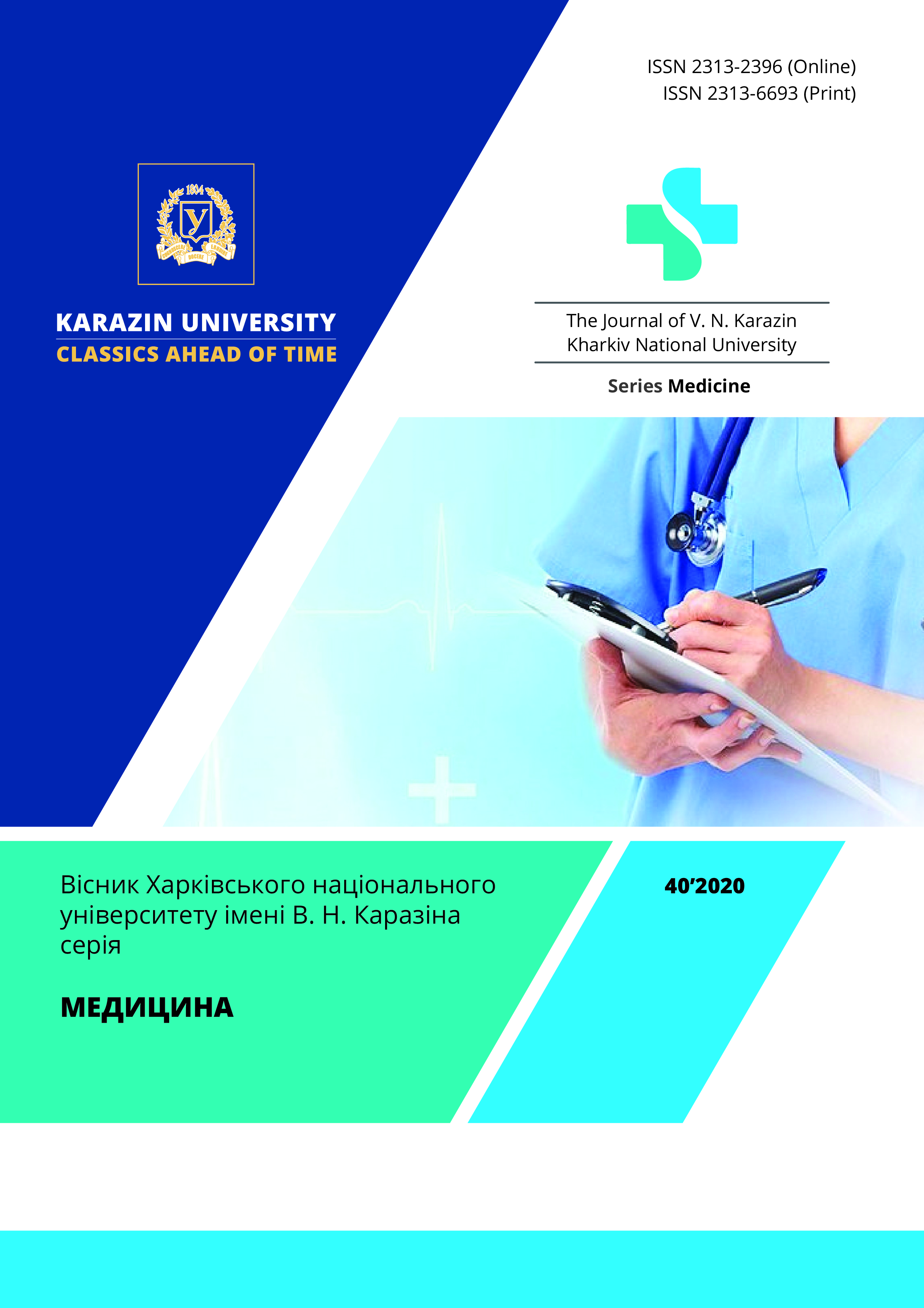Antioxidant system in implementation of endotoxicosis syndrome in young persons with comorbidity of gastroesophageal reflux disease and autoimmune thyroiditis
Abstract
Introduction. In recent years, there has been an increase in the prevalence of gastroesophageal reflux disease and autoimmune thyroiditis in young people. This is associated with a hereditary predisposition, viral diseases, which are often recorded in children's and adolescent groups, the unreasonable use of a large number of drugs, as well as the influence of various negative environmental factors, instability of the autonomic nervous system, eating disorders, the presence of bad habits, chronic stress and others. The aim of the work was to investigate the state of total antioxidant status and the content of biomarkers of the second phase of detoxification of xenobiotics - manganese superoxide dismutase and glutathione peroxidase in young people with gastroesophageal reflux disease and autoimmune thyroiditis. Materials and methods. To achieve this goal, 120 patients with a combined course of gastroesophageal reflux disease (GERD) and autoimmune thyroiditis (AIT) were examined, which made up the main group and two comparison groups: with isolated GERD (45 people) and AIT (42 patients). All patients were students of various universities and were between the ages of 18 and 25. Duration of the disease did not exceed 3 years. The total antioxidant status as an indicator of the first phase of defense and the levels of mitochondrial manganese superoxide dismutase and glutathione peroxidase – the second phase of antioxidant defense was determined. Results. The study showed that in all surveyed groups there was a decrease of total antioxidant status, which characterizes the first phase of the antioxidant defense system. Changes in the first phase of antioxidant defense affect the indicators of the second level of the system, which became the basis for studying the activity of mitochondrial manganese superoxide dismutase. Thus, the value of this indicator in all examined individuals exceeded the norm, which confirmed the inclusion of the second controlling phase of antioxidant system into the pathological process. At the same time, an increase inhibition of the glutathione defense link, the second phase of xenobiotic detoxification, were diagnosed. Conclusions. Negative changes occur in the enzyme system of the first line of antioxidant system in patients with GERD and AIT which may be the result of an unfavorable autoimmune background. Control over the work of antioxidant system moves to the second phase of the system, manifested by an increase in the content of mitochondrial manganese superoxide dismutase and inhibition of the activity of glutathione peroxidase in patients with a combination of GERD and AIT.
Downloads
References
Aksenova VM, Kuznetsov VF, Maslov YuN, Schekotov VV, Shchekotova AP. Laboratory diagnostics of endogenous intoxication syndrome: methodical. Recommendations [Laboratornaya diagnostika sindroma endogennoy intoksikatsii: metodich. rekomendatsii]. Perm. 2005. – 22 p. [in Russian].
Phaniendra A, Jestadi DB, Periyasamy L. Free radicals: properties, sources, targets, and their implication in various diseases. Indian J Clin Biochem. 2015; 30 (1): 11–26. https://doi.org/10.1007/s12291-014-0446-0
Pratt DA, Tallman KA, Porter NA. Free radical oxidation of polyunsaturated lipids: New mechanistic insights and the development of peroxyl radical clocks. Acc Chem Res. 2011; 44 (6): 458–467. https://doi.org/10.1021/ar200024c
Yin H, Xu L, Porter N. Free Radical Lipid Peroxidation: Mechanisms and Analysis. Chemical reviews. 2011; 111: 5944–72. https://doi.org/10.1021/cr200084z
Snezhkina A, Kudryavtseva A, Kardymon O, еt al. ROS Generation and Antioxidant Defense Systems in Normal and Malignant Cells. Oxidative Medicine and Cellular Longevity. 2019; 1–17. https://doi.org/10.1155/2019/6175804
Kurutas EB. The importance of antioxidants which play the role in cellular response against oxidative/nitrosative stress: current state. Nutr J. 2016; 15 (1): 71. Published 2016, Jul 25. https://doi.org/10.1186/s12937-016-0186-5
Nirwan JS, Hasan SS, Babar Z. et al. Global Prevalence and Risk Factors of Gastro-oesophageal Reflux Disease (GORD): Systematic Review with Meta-analysis. Sci Rep 2020 Apr 2; 10 (1): 5814. https://doi.org/10.1038/s41598-020-62795-1
Bliddal S, Nielsen CH, Feldt-Rasmussen U. Recent advances in understanding autoimmune thyroid disease: the tallest tree in the forest of polyautoimmunity. F1000Res. 2017; 6: 1776. https://doi.org/10.12688/f1000research.11535.1
Halawani HM, Ali Naji AN, M Alahmari MS, et al. A Literature Review on the Incidence of Autoimmune Thyroid Diseases. EC Endocrinology and Metabolic Research. 2017; 1 (1): 10–18.
Pasiieshvili TM. Vegetative reactivity and vegetative supply in different variants of gastroesophageal reflux disease in young patients with autoimmune inflammation. Actual problems of modern medicine: Bulletin of Ukrainian Medical Stomatological Academy. 2020; 20 (1): 115–119. https://doi.org/10.31718/2077-1096.20.1.115. [In Ukrainian]
Wang Y, Branicky R, Noë A. et al. Superoxide dismutases: Dual roles in controlling ROS damage and regulating ROS signaling. J Cell Biol. 2018; 217 (6): 1915–1928. https://doi.org/10.1083/jcb.201708007
The Journal of V. N. Karazin Kharkiv National University, series Medicine has following copyright terms:
- Authors retain copyright and grant the journal right of first publication with the work simultaneously licensed under a Creative Commons Attribution License that allows others to share the work with an acknowledgement of the work’s authorship and initial publication in this journal.
- Authors are able to enter into separate, additional contractual arrangements for the non-exclusive distribution of the journal’s published version of the work, with an acknowledgement of its initial publication in this journal.
- Authors are permitted and encouraged to post their work online prior to and during the submission process, as it can lead to productive exchanges, as well as earlier and greater citation of published work.




